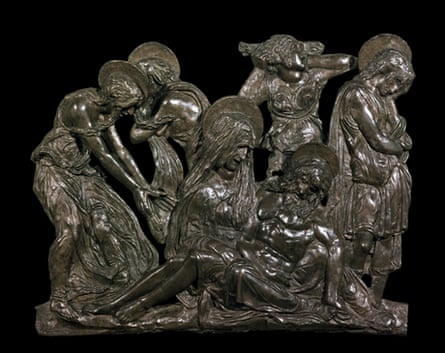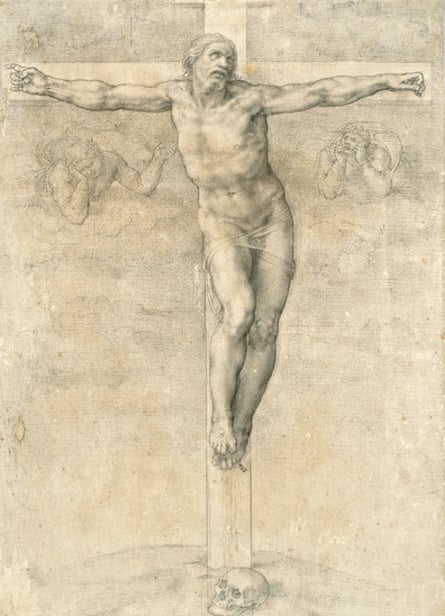The art of Easter is gory and profound. If Christmas is the season of angels, stables and wise men bearing gifts, Easter in art is the time of suffering, death and resurrection.
It doesn't matter what you believe in or don't. The story of Christ's passion has inspired some of the greatest artists to create their most serious works. Of all the rituals that marked the pre-modern year in Christian Europe, this was the time for the darkest meditations and most intense hopes.
This contemplative mood makes the art of Easter far more personal than that of Christmas. Michelangelo, that most serious of artists, meditates on the cross in a way that is viscerally moving – you can almost hear his muttered prayers, feel him clutch a crucifix. His drawing of Christ on the cross is a passionate attempt to imagine a moment of unbelievable suffering out of which comes cosmic hope. He returns again and again to the anguish of Christ's death; in his early sculpture of the Pietà in St Peter's, the flesh of Christ relaxes, his body bereft of life yet endowed with a beauty that intimates a life beyond this one.

In his later, unfinished Rondanini Pietà, the figures of Christ and Mary are reduced to stark notations of pain. This masterpiece anticipates early 20th-century expressionism in its radical image of primal emotion. So, for that matter, does Donatello's harrowing Lamentation, which can be seen in London's V&A.
The extreme personal meditations the death of Christ evoked led to many works of art that look "modernist" but were created long before the birth of modernism. The German Renaissance artist Matthias Grünewald's Isenheim Altarpiece includes a crucifixion scene in which the body of Christ has turned green and sprouted dozens of dark scabs. It has been an inspiration to modern artists.
Grünewald's portrayal of the resurrection is even more unsettling, somehow, as a glowing Christ sends soldiers falling and fleeing, illuminating the world with a nuclear explosion of divine power.

Lucas Cranach the Elder painted another disturbing Renaissance scene of Christ on the cross, flanked by thieves, a stark triumvirate of suffering. Earlier still, Giotto depicted Judas betraying Christ with a kiss, their lips and eyes meeting in a moment of truth and treachery.
Caravaggio painted an eloquent scene of Christ's arrest; Rembrandt created a stormy, visionary and sublime image of the Three Crosses.
What all these masterpieces share is a soul-searching severity that forces them to make radical pictorial decisions. In seeking the inner meaning of Easter, these great artists set aside consolation and tradition to reveal harrowing and extreme visions of anguish and insight. In their art, Easter is a long dark night of the soul.
Enjoy your eggs.

Comments (…)
Sign in or create your Guardian account to join the discussion